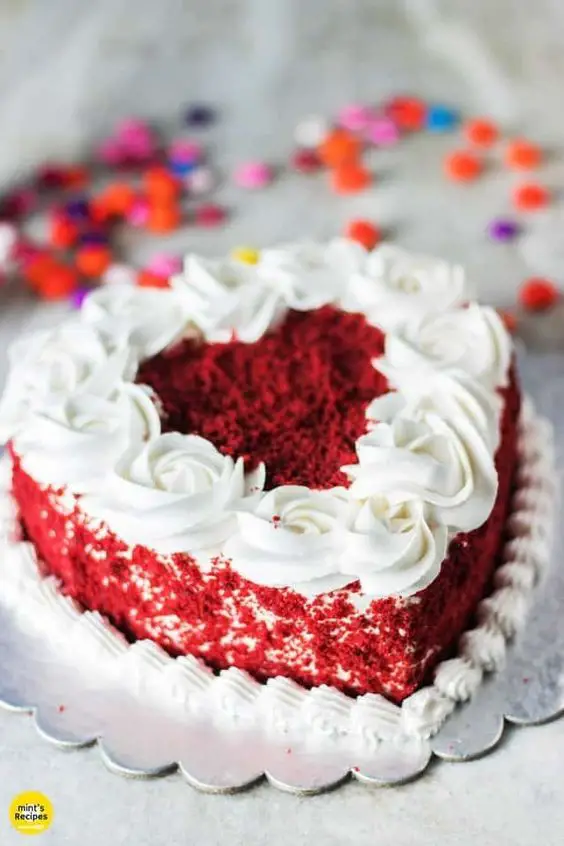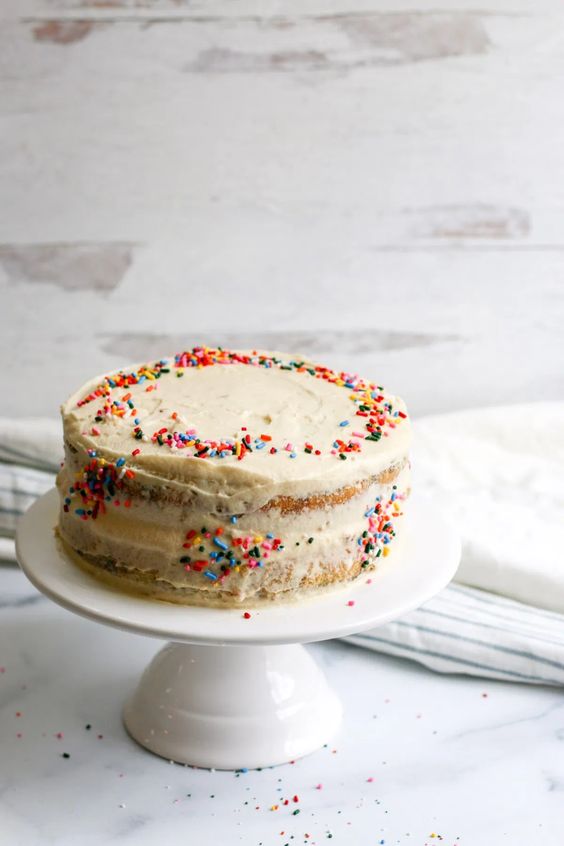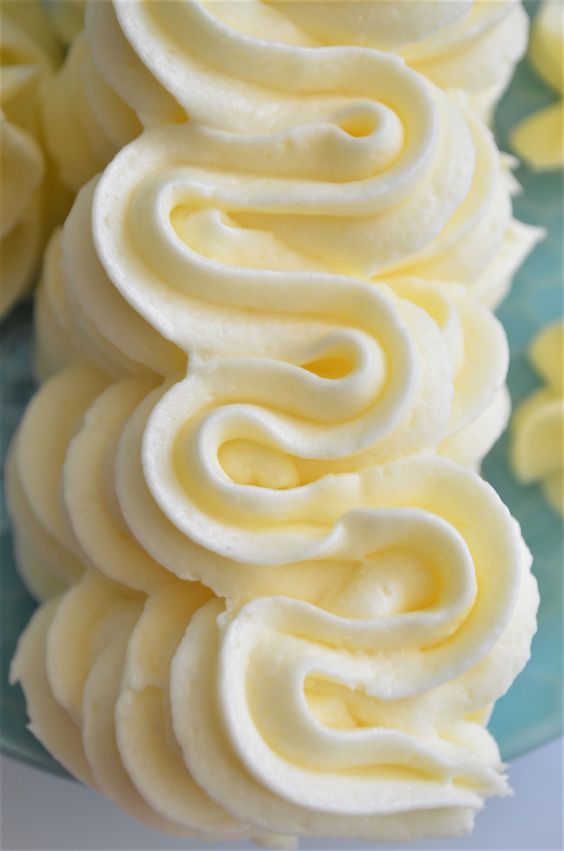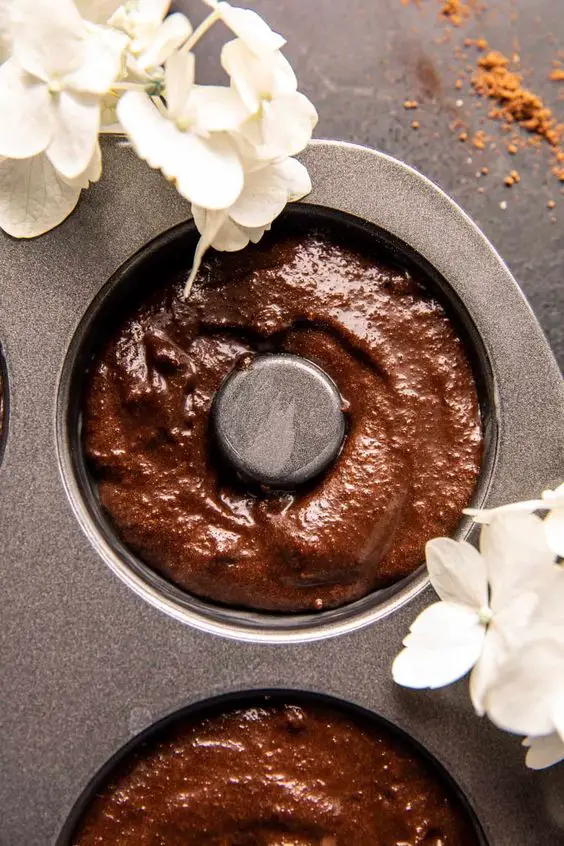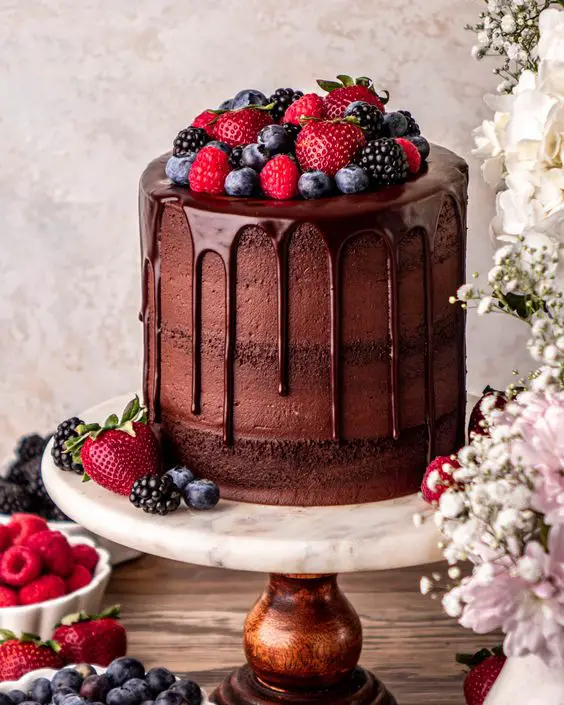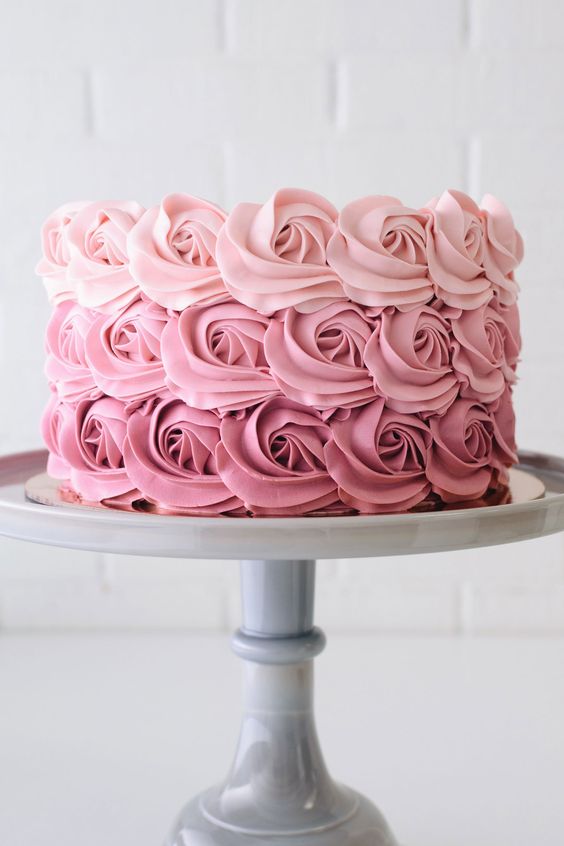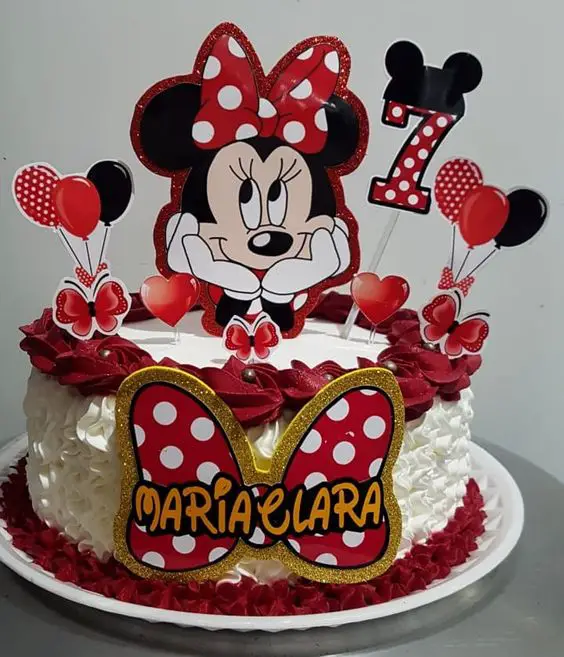Italian meringue buttercream is a classic frosting beloved by professional bakers and amateurs alike. This decadent buttercream, crafted from butter, sugar, and egg whites, strikes the perfect balance of sweetness while maintaining exceptional stability. It can be infused with various flavors, making it the ideal choice for embellishing wedding cakes and for intricate cake decorating and piping.
Behold, a remarkable recipe for Italian meringue buttercream, complete with measurements in grams (and cups), and comprehensive instructions for creating this delectable frosting in the comfort of your own home!

WHAT EXACTLY IS ITALIAN MERINGUE BUTTERCREAM?
Italian meringue buttercream is a velvety-smooth frosting that garners favor from seasoned pastry connoisseurs. Its moderate sweetness provides an excellent blank canvas for incorporating diverse flavors and colors. This versatile frosting can be skillfully piped and utilized to adorn elaborate cakes and cupcakes, particularly those destined for weddings. It also functions admirably under fondant, boasting unrivaled stability among buttercream varieties.
It’s worth noting that Italian meringue and Swiss meringue buttercreams diverge significantly from their American counterparts, as they do not contain powdered sugar. The flavor profile of Swiss and Italian meringue buttercream leans more towards buttery richness rather than overwhelming sweetness, which may come as a delightful surprise to North American palates accustomed to hastily prepared frostings comprising powdered sugar and butter.
Italian meringue buttercream enjoys greater popularity in Europe, particularly in France. As a matter of fact, it was the predominant type of frosting taught at Le Cordon Bleu, where I received my education in pastry arts. The technique behind crafting Italian meringue buttercream ensures that the ingredients meld seamlessly, resulting in a consistently stable frosting.

ESSENTIAL INGREDIENTS FOR ITALIAN MERINGUE BUTTERCREAM
Italian meringue buttercream, much like its Swiss counterpart, differs significantly from American buttercream. It incorporates three fundamental ingredients:
- Egg whites
- Granulated sugar
- Water
- Butter
Additionally, there are optional ingredients that can be incorporated into Italian meringue buttercream:
- Cream of tartar, which stabilizes the meringue
- Salt, used to facilitate faster whipping of the egg whites and/or to impart a subtle flavor to the buttercream
- Vanilla extract (or other flavor extracts) to enhance the taste profile of the Italian meringue buttercream, adding a touch of sweetness
Remember, unlike American buttercream, Italian meringue buttercream does not include powdered sugar. Instead, it derives its sweetness from sugar syrup.

HOW DO YOU PREPARE ITALIAN MERINGUE BUTTERCREAM?
To whip up a batch of Italian meringue buttercream, you kick-start the process with an Italian meringue that undergoes a delightful fusion with butter, resulting in a flawlessly amalgamated buttercream frosting, as the moniker implies. Italian meringue belongs to a trinity of meringue variants that can be crafted, namely French, Swiss, and Italian. Though all three employ egg whites and sugar, their preparation methods diverge:
French meringue necessitates no application of heat. It entails whipping the egg whites while gradually incorporating sugar. This technique mirrors that of concocting a chocolate pavlova. While French meringue is simpler to whip up, it lacks the fortitude of its counterparts since it relies solely on sugar for stabilization. In general, French meringue isn’t employed for crafting buttercream, presumably due to its inherent instability. It’s worth noting that French buttercream is not derived from French meringue, unlike Swiss and Italian variations. Instead, French buttercream entails concocting a “pâte à bombe” using egg yolks whipped with hot syrup heated to the soft ball stage.
Swiss meringue, on the other hand, involves whisking the egg whites together with sugar over a double-boiler. This method enables gentle heating of the egg whites, gradually fostering a sturdy meringue. Applying direct heat would otherwise cook the egg whites. Heating the egg whites results in a more resilient meringue. Once the Swiss meringue cools down, it can be mixed with butter to produce Swiss meringue buttercream. Technically, crafting Swiss meringue is simpler than its Italian counterpart. However, Swiss meringue, as well as the ensuing buttercream, isn’t as steadfast as Italian meringue. Nevertheless, Swiss meringue buttercream exhibits sufficient stability for most applications.
As for Italian meringue, the egg whites are whisked alone (or with a small portion of sugar to prevent over-whipping!). Simultaneously, sugar is combined with water and heated to form a syrup. The syrup is cooked until it reaches a temperature between the soft ball stage and the firm ball stage (234-240 °F or 112-115 °C, and a maximum of 250 ºF or 121 ºC), after which it is gradually poured into the whisked meringue while continuing to whisk. This scorching sugar syrup engenders the most durable meringue conceivable: Italian meringue. The meringue is whipped until cooled, at which point it can be piped or incorporated with butter to yield Italian meringue buttercream (recipe provided below). Due to their distinctive preparation techniques, both Italian meringue and Italian meringue buttercream boast exceptional stability. It’s worth noting that Italian meringue is also utilized in crafting macarons, which should not be mistaken for macaroons.

HOW TO DETERMINE THE SOFT BALL STAGE FOR ITALIAN MERINGUE: A GUIDE
The crucial element in preparing Italian meringue and Italian meringue frosting lies in achieving the ideal temperature for the sugar syrup. It should reach the soft ball stage. To ascertain if the syrup has attained the desired state, follow these steps:
- Use a thermometer to gauge the temperature of the sugar syrup.
Opt for an instant-read thermometer if available. Personally, I utilized a Thermapen, renowned for its rapid and accurate temperature readings. However, a probe thermometer with a lengthier cable, such as the ChefAlarm, would be preferable. With this option, you can avoid the need to hold the thermometer with your hands, significantly reducing any potential risks associated with my handheld setup. Time is of the essence when it comes to heating sugar syrups. Should you overheat the syrup (reaching the hard ball stage), pouring it over the whipped egg whites may pose difficulties, resulting in the syrup hardening and struggling to blend smoothly into the egg whites.
- Determine the temperature of the sugar syrup without employing a thermometer, using a manual approach. This method requires a bowl of ice water. When you wish to check the temperature, remove the saucepan from the heat source. Extract a small sample of the syrup and drop it into the ice water bath.
- If the syrup immediately disappears and dissolves upon contact, it indicates insufficient cooking. Place the saucepan back on the stove to cook it further.
- If the syrup forms a soft ball in the ice water, which can be gently flattened between your fingertips, you can conclude that your syrup is approximately 234-240 °F or 112-115 °C. Remember to roll the ball between your fingers and exert pressure to assess its texture accurately.
- If the syrup forms a firm ball in the ice water, possessing a degree of solidity while remaining pliable (but not overly hard), it signifies that your syrup has nearly reached 249 ºF or 121 ºC. This temperature represents the upper limit for creating Italian meringue.
- Should the syrup form a hard ball in the ice water, it suggests that your syrup has likely become too hot, resulting in reduced water content. Under these circumstances, it may prove challenging to produce Italian meringue with the desired consistency.
Follow these guidelines diligently to determine the soft ball stage of the sugar syrup, ensuring your Italian meringue turns out flawlessly.

HIGHER TEMPERATURE SYRUPS FOR ITALIAN MERINGUE
There are some pastry chefs who suggest cooking syrups to higher temperatures, even reaching as high as 121 ºC, which is almost the hard ball stage. The concept behind this is that the hotter sugar syrup will elevate the temperature of the egg whites enough to attempt pasteurization. If food safety is a concern for you, it might be worth considering and testing this approach.
UTILIZE A STAND MIXER FOR MAKING ITALIAN MERINGUE BUTTERCREAM
While I initially learned how to make Italian meringue by hand with a large balloon whisk, let’s be honest: nothing compares to the convenience and results achieved with a stand mixer. Making Italian meringue by hand with a whisk can be quite a challenge, and I strongly advise against it. It involves continuously whisking the egg whites in a bowl while slowly pouring the hot syrup in a steady stream.
This step can be quite risky considering that the sugar is cooked to temperatures between 112 ºC and 121 ºC. Even using a hand mixer for this type of recipe and preparation can be dangerous. My only recommendation is to make Italian meringue buttercream with a stand mixer, such as the KitchenAid stand mixer.
If you’re making a large batch of Italian meringue buttercream using 10 egg whites, you’ll need a larger mixer bowl. It’s best to make a substantial batch in a 6-quart or 7-quart mixer. However, for smaller batches consisting of 5 to 7 egg whites, a smaller 5-quart stand mixer will suffice.
The following recipe will fit in a 5-quart bowl, but it will be a tight fit.
In case you don’t have a stand mixer and wish to make frosting with a hand mixer, you can try alternatives like a thick cream cheese frosting or a milk chocolate frosting. For instance, the frosting for the Milk Bar birthday cake can also be made using a hand mixer. Another option is to prepare a raspberry frosting, which involves an American buttercream flavored with concentrated raspberry purée.
HOW MUCH BUTTERCREAM DO YOU NEED TO FROST AND DECORATE A CAKE?
Interestingly, making a double batch of IMBC (Italian Meringue Buttercream) is actually easier than making a single batch. This is because the whipped egg whites, before adding the syrup, already fill the 6.5 Qt mixer bowl to a level that makes adding the syrup much simpler, without the worry of it splattering over the beater! From now on, I’ll make my IMBC in double batches, using 10 egg whites at a time, instead of single batches. I can freeze the leftovers for future use.
To assemble and decorate an 8-inch cake with three layers, you’ll need one batch of Italian meringue buttercream made with 10 egg whites. I assembled and lightly frosted the cake with plain, uncolored buttercream. Then, I divided the remaining (~900 grams) into three bowls and colored each portion with varying amounts of violet gel color (from Ateco/Spectrum).
When it comes to coloring buttercreams that have a high butter/fat content, I prefer using gel food colors. I have even tried oil-based gel food colors, also known as candy colors. Oil-based candy food colors blend easily into buttercreams, whereas water-based gel food colors may not incorporate properly, resulting in uneven coloring.
For the piping, I followed i am baker’s wonderful rose cake tutorial using a 1M tip from Wilton (which you can purchase on Amazon). I found it challenging to fill the space properly and estimate the size of each rose to pipe, but with practice, I’m confident I’ll improve. Additionally, my two darker lilac colors turned out too similar. It seems I need to work on my coloring technique as well!

ITALIAN MERINGUE BUTTERCREAM RECIPE
Before proceeding with the recipe for Italian meringue buttercream, make sure to read the frequently asked questions about making buttercream and working with it. This way, you’ll become familiar with potential issues that may arise during the preparation, how to address them, and when to use this type of buttercream.
Frequently Asked Questions:
How should I store Italian Meringue Buttercream?
To store Italian Meringue Buttercream, you have two options. You can keep it in the refrigerator for up to 5 days, or store it in the freezer for 3 months. Whichever method you choose, ensure that you place the buttercream in an airtight container or a freezer bag of gallon size.
When you wish to use the stored buttercream, start by bringing it to room temperature. Then, beat it in a mixing bowl with a whisk attachment on low speed for a few minutes before applying it to your cupcakes or cake. This instruction applies to buttercream that has been made in advance and stored as well.
It’s essential to note that this Italian Meringue Buttercream is not shelf-stable due to the presence of egg yolks and butter. Therefore, after using it to decorate your cupcakes or cake, refrain from leaving these frosted treats at room temperature for more than 1-2 days maximum. Moreover, avoid exposing them to warm conditions or direct sunlight.
Can I use Italian Meringue Buttercream as a substitute for frosting?
That’s an excellent question! Here are a few factors to consider when distinguishing between buttercream and frosting:
While both buttercream and frosting are thicker than icing or glaze, buttercream is typically made with a base of hot sugar syrup and butter. In contrast, frosting incorporates a cream base along with butter. Despite this difference, it’s unlikely to hinder you from using frosting and buttercream interchangeably. Many individuals tend to mix up these terms when referring to their preferred cake or cupcake decoration.
Frosting, like Cream Cheese Frosting, complements red velvet cakes splendidly or any other dessert where a subtle tang is desired without overwhelming sweetness. On the other hand, buttercream tends to be sweeter, which pairs well with a rich chocolate cake base.
Most types of buttercream, whether American, Swiss Meringue, or Italian Meringue, possess a light and velvety texture. They are ideal for creating piped swirls and borders. Italian Meringue Buttercream, specifically, is suitable for intricate piping details. Frosting, however, can be a bit challenging to pipe due to its creamy consistency. Nevertheless, it doesn’t mean that you can never pipe with frosting. My recipe for Cream Cheese Frosting serves as a great example of frosting that’s sturdy enough for piping.
What can I do with leftover Italian Meringue Buttercream?
If you find yourself with some leftover Italian Meringue Buttercream that isn’t sufficient for additional cupcakes or a cake, consider utilizing it in the following ways:
- Create a delightful sweet dip by adding softened cream cheese to the buttercream. This dip pairs wonderfully with sweet crackers or fruit.
- Fashion delectable cake balls by rolling crumbled cake into bite-sized spheres. Fill them with the buttercream and then freeze for an hour. Once firm, coat the cake balls with melted white chocolate to set and serve.
- Transform the buttercream into a glaze by adding milk to thin its consistency. You can then pour this glaze over cinnamon rolls, muffins, brownies, blondies, or cookies.
- Warm it up slightly and drizzle a few scoops over a scoop of ice cream for a delectable topping.
- Use it as a spread over your favorite sweet crackers for a delightful snack.
What is Italian Meringue Buttercream?
Italian Meringue Buttercream, also known as Italian Buttercream, is the most intricate type of buttercream among the three varieties (American, Swiss, and Italian). It is also the most stable in terms of structure and shelf life. Similar to Swiss Meringue Buttercream, the Italian version derives its name from the initial step of creating Italian meringue. This process involves carefully combining boiling sugar syrup with whisked egg whites. Consequently, this type of buttercream is often favored by experienced home bakers. However, don’t let that discourage you! This recipe provides a step-by-step guide to assist you throughout the entire process!
What sets Italian Meringue Buttercream apart from Swiss Meringue Buttercream?
The primary distinction between Italian Meringue Buttercream and Swiss Meringue Buttercream lies in the method of preparation. Italian buttercream involves creating a sugar syrup and pouring it into the egg whites, whereas Swiss buttercream entails heating the sugar and egg whites together and subsequently whipping them into a meringue.
RECIPE FOR ITALIAN MERINGUE BUTTERCREAM
REQUIRED EQUIPMENT
- ChefAlarm thermometer
- 6-quart KitchenAid Pro mixer
INGREDIENTS
- 125 mL water
- 560 grams granulated sugar (divided)
- 300 grams large egg whites (equivalent to 10 large eggs)
- 1 pinch of cream of tartar
- 908 grams unsalted butter (at room temperature)
- 2 pinches of Diamond Crystal fine kosher salt
- 2 teaspoons pure vanilla extract
INSTRUCTIONS
- Place the egg whites in the bowl of a standing mixer and begin beating them on medium speed until they become foamy.
- Add the cream of tartar to the egg whites and continue beating until stiff peaks form and they retain their shape.
- In the meantime, combine the sugar and water in a saucepan. Heat the mixture over medium-high heat, stirring until all the sugar granules dissolve.
- Keep heating the sugar mixture until it reaches a temperature of 238-240°F (soft-ball stage).
- Transfer the sugar syrup to a measuring cup or any container that facilitates pouring in a thin stream.
- While the mixer is running on low speed, pour the sugar syrup into the stiff egg whites in a very thin stream.
- Mix on low speed until all the sugar syrup is fully incorporated. The egg white mixture will now have a glossy and stiff consistency resembling meringue.
- Continue mixing on medium speed until the egg whites have completely cooled (check the bowl to ensure there is no residual warmth).
- Once the meringue has cooled, add the butter to it, 1-2 cubes at a time. Fully incorporate each tablespoon of butter into the meringue before adding the next couple of cubes.
- Keep adding 1-2 cubes of butter at a time until it is fully combined.
- Scrape down the sides of the bowl and switch to the paddle attachment. Add the vanilla extract.
- Beat the buttercream on low speed using the paddle attachment for several minutes to remove any air bubbles. Initially, the buttercream may appear curdled, but it will eventually transform into a smooth and luscious frosting.
- For frosting cupcakes with a swirl, prepare a large piping bag fitted with cake decorating tip #1M. Fill the piping bag with the buttercream. Pipe the buttercream onto the cupcakes in a counter-clockwise direction, swirling up and toward the center.
NOTES
Allow me to provide you with some valuable information regarding this exquisite buttercream. Its texture is exceptionally light and velvety smooth. It serves as a splendid choice for creating mesmerizing swirls and delicate borders, and it even lends itself to intricate piping designs.
Among all buttercreams, this frosting boasts an impressive shelf life. However, it is important to note that it should not be left out in warm temperatures. Should the frosting become overly soft for piping or spreading, simply place it in the refrigerator for a while, allowing it to regain its desired firmness. In the event that it has been refrigerated for an extended period, you may find it necessary to rebeat the frosting to achieve a perfectly smooth consistency.
A helpful tip: This recipe can easily be doubled, offering you a larger quantity of delectable buttercream to indulge in.
If, by any chance, you find yourself without unsalted butter, fear not! Salted butter can be used as a suitable substitute, ensuring your buttercream remains irresistibly flavorful.
It is crucial to cool the meringue before incorporating the butter. This precaution prevents the warm meringue from causing the butter to melt. To expedite the cooling process, you may gently press an ice pack or a cold cloth against the outer surface of the mixing bowl. This will aid in achieving the desired temperature promptly.
Additional tip: In all the piping showcased in the accompanying photos, the marvelous Tip #1M was employed. Its versatile nature makes it an ideal choice for various designs.
For those seeking to add a touch of color to their Italian meringue buttercream, high-quality gel food coloring is recommended. However, do exercise caution and avoid using liquid food coloring as it tends to produce a speckled appearance when incorporated into this type of frosting.
Should you decide to prepare the buttercream in advance, storing it in an airtight container within the refrigerator (or freezer) will maintain its freshness. When ready to use, allow it to thaw until it reaches a soft consistency, and then proceed to rebeat it for several minutes using the paddle attachment on your mixer. This will ensure a lusciously smooth texture that delights the palate.
For optimal results, it is recommended to utilize a standing mixer when following this recipe. While a hand mixer is a viable alternative, please be aware that it will demand a considerable amount of time and effort, potentially leaving your arms feeling fatigued.
A helpful suggestion: While pouring the sugar mixture directly from the saucepan into the egg whites is possible, it is advisable to transfer it to a measuring cup beforehand. This simple step facilitates the pouring process, ensuring greater precision when incorporating it into the egg whites.
It is worth noting that Italian meringue buttercream distinguishes itself from Swiss meringue buttercream in terms of preparation. In the former, a sugar syrup is created and then poured into the egg whites. On the other hand, the latter involves heating the sugar and egg whites together before whipping them into a luscious meringue.
NUTRITION
Indulge in the knowledge of the nutritional breakdown for this delectable buttercream:
Calories: 1093kcal | Carbohydrates: 67g | Protein: 5g | Fat: 92g | Saturated Fat: 58g | Polyunsaturated Fat: 3g | Monounsaturated Fat: 24g | Trans Fat: 4g | Cholesterol: 244mg | Sodium: 78mg | Potassium: 107mg | Sugar: 67g | Vitamin A: 2836IU | Calcium: 32mg | Iron: 1mg
Wishing you joy and success in your baking endeavors!


